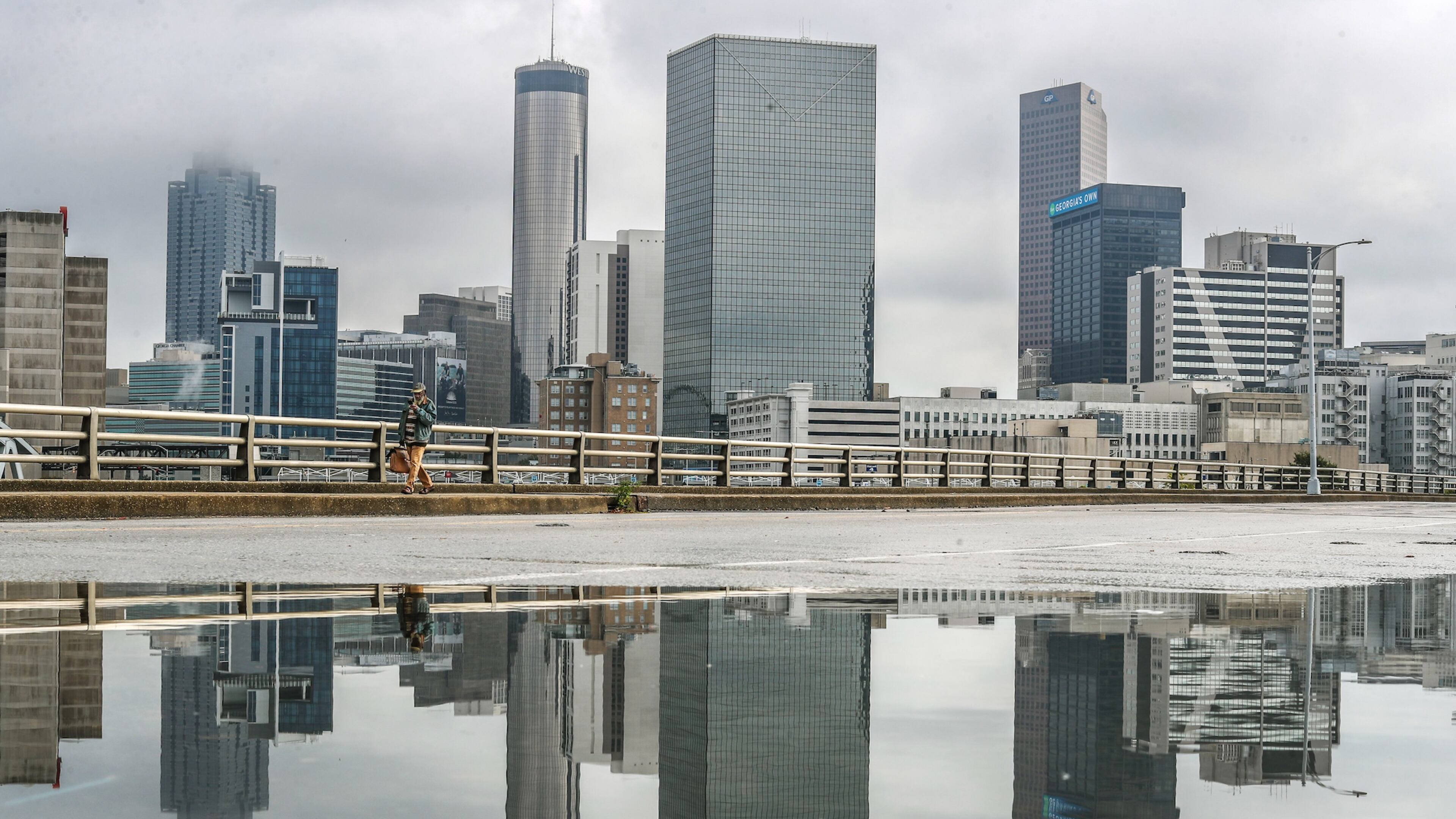Atlanta starts to ‘come to grips’ with deluge of unwanted office space

Metro Atlanta’s office market is starting to stir from its slumber — for better or worse.
More than 2.2 million square feet of office leases were signed in the Atlanta area during this year’s first quarter, the most activity to start a year since 2020 at the start of the COVID-19 outbreak, according to data from real estate services firm CBRE.
That’s the good news. The bad news is that despite the uptick in new leases and renewals, Atlanta’s glut of unwanted office space continues to set records.
About 32.4% — or nearly one-third — of all office square footage in metro Atlanta was available to rent at the end of March, according to CBRE. That’s the fourth financial quarter in a row in which the region reached a new high-water mark for unused office space.
Real estate analysts say the leasing uptick signals that companies are starting to regain some confidence on their post-pandemic workplace needs. But so far, many employers have scaled back their space.
“There’s been some good news about some companies expanding in the market,” CBRE Associate Field Research Director Scott Amoson said. “But it’s just not enough to fill the void of how much space is coming on (the market).”
The office market has struggled to find its footing in the wake of the pandemic, which popularized hybrid and remote work while upending workplace expansion plans. The uncertainty has prompted droves of companies to try to find other businesses to sublease their unused offices, with 9.3 million square feet of space on the sublease market.
For context, nearly 40 million square feet in the Atlanta area is vacant, or the equivalent more than 30 Bank of America Plazas. Available sublease space would add seven more Bank of America Plazas.

Dwindling office occupancy and increased interest rates have many real estate experts concerned that a wave of foreclosures could be on the horizon, which threatens local governments’ tax digests. Cities, counties and schools rely heavily on commercial tax revenue to fund services.
Rates are likely to remain elevated as the Federal Reserve continues its battle with persistently high inflation. Fed Chairman Jerome Powell said Tuesday that higher-than-anticipated inflation numbers mean it will likely “take longer than expected” to cut rates.
David Rubenstein, a Savills vice chairman who oversees the real estate services firm’s Atlanta operations, said landlords, companies and brokers have been navigating uncharted waters since 2020. Increased leasing activity helps give them more information to make their decisions.
“It’s a sign that business owners have come to grips with the new reality of the role office space plays in their business,” he said. “... Just to see activity is encouraging.”
Trying to spur confidence
Unless forced to action by expiring leases, many employers have chosen to sit on the sidelines.
That’s still predominantly the case, with CBRE data showing that more than half of the first-quarter’s lease signings consisted of renewals. Without much activity, it’s difficult for an office market to grow.
The past five quarters saw negative absorption, a measure of how much the office rental market is expanding or contracting. Atlanta’s office market experienced about 1.5 million square feet of negative absorption during this year’s first quarter, following nearly 2.9 million square feet of negative absorption for all of 2023.
The dour state of the office market hasn’t deterred landlords from seeking high asking rents.
The average lease rate for top-quality buildings, referred to as Class A, at the end of March was $33.82 per square foot in metro Atlanta, a 2.5% increase from the prior quarter, according to CBRE. Rubenstein said that figure doesn’t tell the full story, because landlords are finding other ways to sweeten the pot for prospective tenants.
“A lot of times those rental rates are offset with significant concessions, mostly free rent and tenant improvement allowances,” he said.
Older office buildings or those located in areas away from surrounding amenities have seen more distress and lower occupancy rates, but their asking rents have also continued to increase, CBRE found. John Neal Scott, an Atlanta senior vice president with Foundry Commercial, said single-use office buildings, often called commodity, are playing a different game from Class A.
“Some buildings are just going to be commodity office buildings, and that’s OK,” said Scott. “They’re just going to compete for a different tenant.”
‘Momentum will compound’
The headwinds facing the office sector have prompted developers to slow down new office projects, with only a handful still in the works.
About 1.9 million square feet of new office space is currently in the construction pipeline, according to CBRE, while that figure was more than 6 million square feet three years ago.
Analysts say with fewer new buildings adding to the region’s woes that that organic demand will be able to make a dent in the glut of space. Growing interest in converting offices into residences also could take some unwanted or outdated inventory out of the market.
Companies like NCR Voyix and UPS mandating more employees return to the office also will help.
“The fundamentals remain strong,” said Nicole Goldsmith, a broker with CBRE. “And as back-to-office initiatives continue to be put in place and leasing activity rebounds, that momentum will compound.”
Editor’s note: This story has been updated to correct the figure for the amount of office space currently in the construction pipeline in metro Atlanta.
Wanted: Office Tenants
Metro Atlanta had a record amount of available office space at the end of March, according to data from CBRE. Here are some key figures:
Office availability rate: 32.4%
Space available for sublease: 9.3 million square feet
Net absorption: -1.5 million square feet
More Stories
Keep Reading

